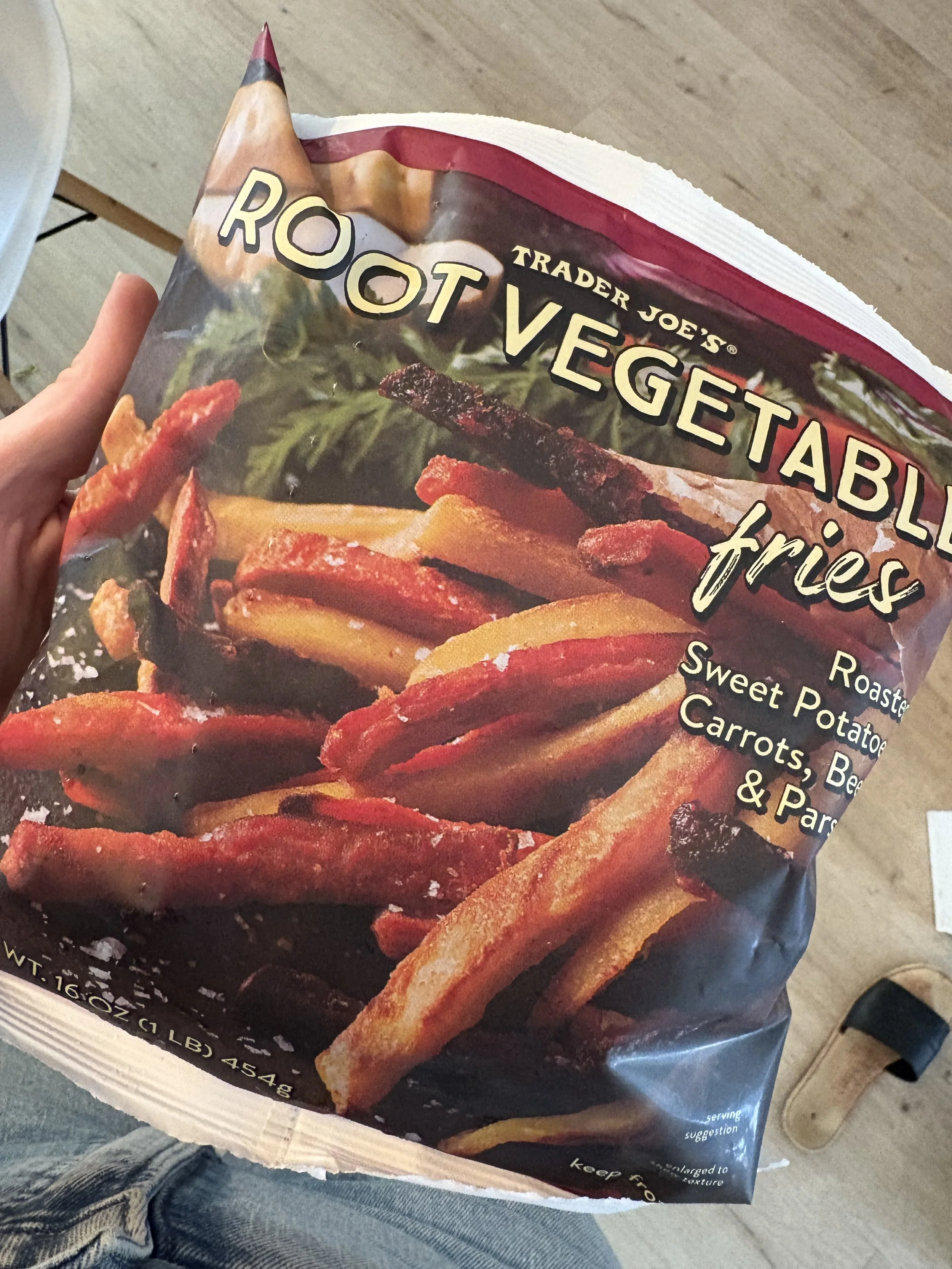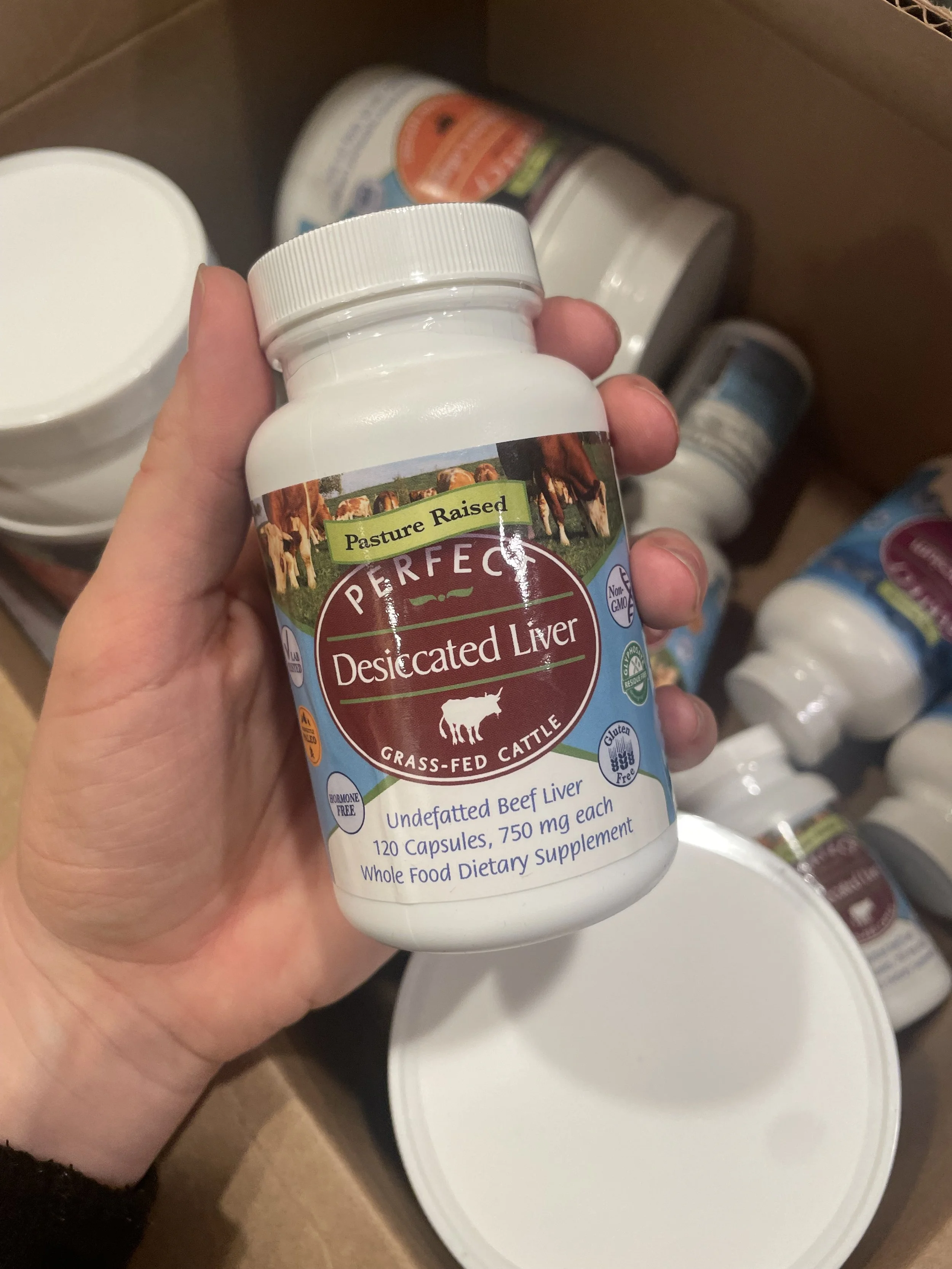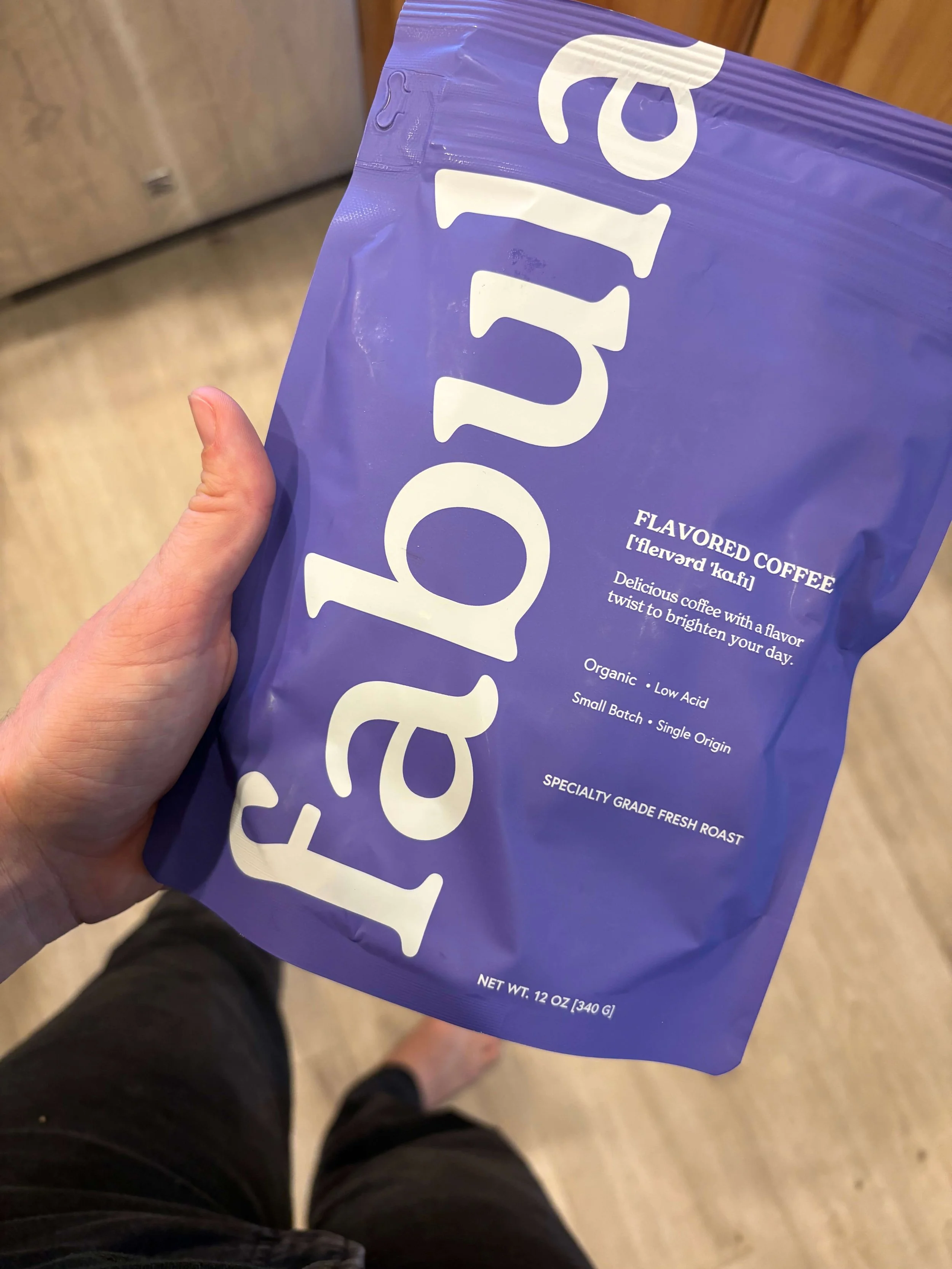What Are the Health Benefits of an Ancestral Diet?
Curious about what an ancestral eating plan looks like?
This post dives into the hows- and the whys- of why an ancestral eating style may be beneficial for your overall health and wellness!
The longer I have worked in health and wellness, the more I think we have over complicated things. It seems like every other month there is a trendy new diet, weight loss product, or wellness hack that inevitably loses popularity after a short time.
But what if having a healthy lifestyle and diet is actually a lot easier than all of that? I am firmly convinced that it is. And I believe it has a lot to do with what we choose when fueling our body.
This post dives into ancestral eating and traditional diets and how they can be supportive to your overall health and wellness!
What Is an Ancestral Diet?
An ancestral diet is intentionally eating foods that our ancestors ate ~500 years ago.
This is slightly different than a "paleo diet" because that prioritizes foods from the paleolithic era and what hunter-gatherer ancestors ate thousands of years ago.
This was before they had a microwave or drive throughs or take out pizza. They didn't have the convenience of picking something up for dinner on the way home from work. Instead, they home cooked their meals, grew their vegetables, and raised or hunted the animals they ate. This means that naturally things were pasture-raised, organic, and well-prepared.
But to make it even simpler and more applicable- it’s just real food. In Michael Pollan’s Book In Defense of Foods he talks about actual food and then food-like items… things that have been modified, engineered, broken down and restructured to resemble food, but it doesn’t quite hit the mark.
The best part of these foods is that they are supportive to how your body works on a cellular level, giving your body all the nourishment it needs to help prevent chronic disease and illness like what is prevalent in the modern world.
What Foods Are Part of a Traditional Diet?
I think in our culture and modern diet we are used to hearing about all the things we "can't" or "shouldn't" eat. But instead, I like to reframe my mindset for myself and my clients and use a technique I learned in school called the “crowding out method”.
The premise is this: prioritize whole, nourishing foods first and it will naturally crowd out the less nutritious foods.
So what foods should you prioritize?
high-quality animal products - Think of how animals naturally live and what is optimal for their life and health- in nature animals are out on pasture grazing primarily grass. This is the food they naturally eat and best digest! So why are we eating animals that are not eating their most natural diet?
When purchasing meat try to follow these guidelines: cows, pigs, and other ruminates should be pasture-raised and grass-fed.
Also try to incorporate nose-to-tail eating. In modern diets, most people dont venture far off from lean meats and muscle meats, when in reality there are so many other parts of an animal with high nutritional value.
bone broth - bone broths are one of the first things I think of when I hear the term "ancestral foods". This is because our ancient ancestors did not have grocery stores where they could pickup food whenever needed. They could not waste any part of an animal that was hunted, so they used the bone and connective tissue to make gelatin and mineral- rich broths. Not only does bone broth help prevent animal waste, but is nourishing with many health benefits. These include being rich in protein, minerals, and supportive for gut health. (you can find my favorite bone broth hack here)
organ meats- organs are another way that ancient human beings prevented waste. Not only that, but organs were often seen as highly sacred because of how nutrient-dense they were for those who ate them! With people like the Liver King gaining popularity on social media, I feel like organ meats are slowly becoming more accessible in modern diets.
Related Reads:
high- quality dairy products : we love low-temperature, vat pasturized dairy or well-sourced raw dairy in our home! Because of the low temperature, the proteins within milk do not become denatured and it aids in the digestibility of the dairy you are eating. Since making this transition my husband (who used to have sensitivities with dairy) now can enjoy milk, cheese, and ice cream without any symptoms. It was purely from transitioning to a high-quality product!
fresh fruits and vegetables : this looks like organic produce that is picked when fresh and in season! When fruits and vegetables are picked when ripe, they offer the highest amounts of vitamins, minerals and antioxidants and they also are most easily digested. Sweet potatoes, dark leafy greens, squash.. all of these are packed with minerals and vitamins that help to support your overall health!
properly prepared whole grains : this looks like soaking our rice and beans before cooking to aid in digestion. The only other grain that we regularly eat are sourdough products that are well fermented to also aid in digestibility.
If you are new to the idea of "ancestral eating" it can seem a little overwhelming at first. For most Americans, it is a completely new concept of eating! One of my favorite books that helps to educate and equip you as you transition your diet into more of this is Nourishing Traditions by Sally Fallon.
What Foods are Not As Supportive to The Human Body?
I am all about sustainable health changes, so I will never say that these are foods you should never eat but rather just be mindful of.
This list is not inherently "unhealthy food", I think any of these items can be eaten in moderation and enjoyed as part of an overall healthy lifestyle. Like I talked about before- the "crowding out" method can be incredibly effective. Simply prioritize healthier options, and enjoy the rest in moderation. Let's shoot for 80/20
seed oils- vegetable oils are highly-oxidized oils that lead to inflammation in the body. Some better options for cooking are olive oil, animal fats like lard or grass-fed butter
processed foods- if it comes in a package, check out the ingredients. Do you actual recognize the ingredients or do you have no idea what something is, let alone how to pronounce it? Chances are you can find an alternative product with fewer ingredients that prioritize more whole foods.
Added sugar- I am not one to demonize sugar. I think it can absolutely have a role in a healthy, enjoyable diet! But it is all about moderation and in our current society, sugar is anything but moderated.If you go through the grocery store, you will find that most packaged foods have some type of added sugar or artificial sweetener added to them. Not only does this create blood sugar spikes (and inevitable crashes) but it also trains your palate to want more and more sugar and far sweeter items in the future. This leads to sugar cravings and an insatiable spiral of blood sugar imbalance.
sugary drinks- extra sweet lattes and energy drinks and juices and mixed drinks all can add to that spiral of blood sugar imbalance. When you are drinking sugary beverages, it takes it one step further though because of the lack of fiber, fats, or proteins that can help to slow down that blood sugar spike.
Again, these are not items that you should never eat again if you want to be healthy. I think "less healthy" foods can be a part of any healthy diet in moderation. If you feel like you are controlled by certain foods or are constantly craving something, that may be a sign that you need to reframe your mindset around food and nutrition.
One of my favorite blog posts is 20 Journal Prompts to Reflect on Your Holistic Health - this is a great place to start when starting your wellness journey and trying to discover what a beneficial first step is for you personally.
What is the Problem With the Standard American Diet?
We are perhaps the unhealthiest we have ever been as a culture. We have high rates of heart disease, chronic inflammation, high blood pressure, obesity, mental health concerns and other diseases that are linked to what we eat.
The standard american diet ( the acronym SAD really says it all...) is full of empty calories. This means that in the standard american diet, the majority of foods are high in calories, but lacking in actual nutrients. This means that our fat cells are filled, but on a cellular level and micronutrient level, we are starving.
While early humans prioritized meat, produce, and well-prepared grains the modern person gets upwards of 70% of their calories from processed carbohydrates. This means that few people are getting the nourishing fat-soluble vitamins, adequate protein levels, minerals and vitamins that our bodies need to thrive. When our cells are starving for these nutrients they get sick, and when that happens on a larger scale, our bodies get sick.
Not only with chronic health conditions and disease, but also by not functioning optimally. Take a took at infertility rates. When our bodies are not well-nourished and supported, fertility is one of the first things that our bodies de-prioritize. There are many other factors at play as well with this example, but it has been incredible to see countless women that were told they could not conceive, get pregnant after adjusting their diet alone.
How to Get Started?
I am all about sustainable and effective health changes. Not only is this best for your overall health, but specifically your mental health. If you are accustomed to eating a modern diet and all of a sudden cut out all the foods you are used to, odds are you will struggle with the restriction and this can lead to binge eating.
First thing, prioritize whole, natural foods over processed foods. A good rule of thumb is shopping the outer perimeter of grocery stores instead of the inner aisles. Whole foods that are more nourishing to your body- fresh produce, healthy meats and dairy, and other fresh ingredients- tend to be in these areas while the processed foods with a long shelf life are often in the aisles.
This might also look like replacing eating out with making a home cooked meal or swapping your drive through coffee with a homemade version. Prioritizing cooking and making your own foods helps for you to have a better understanding of what all is actually inside of the food you eat. (plus it is sooo much more affordable!)
Once you have a strong foundation of whole, nourishing foods as the foundation to your diet then you can start modifying your macronutrient intake and make sure you are actually eating enough. This is one of my favorite processes to work with my clients through. So many people are severely under-eating, and have been for years. That is partially due to growing up in a society that normalizes diet culture, and is increasingly disconnected from the origins of our foods and how they get to our table. But getting to see my clients come out on the other side of under-eating, feeling nourishing, energized, and watching their body have the fuel to function appropriately is amazing!
If you feel like you have been struggling with transitioning to whole nourishing foods, or needing help making sure you are fueling your body adequately I would love to hear from you and help you find success with your wellness and nutrition goals!
Some of my Favorite Meal Ideas for an Ancestral/Traditional Diet
1. Crock Pot or Instant Pot Roast
This is the second year in a row where we have purchased part of a cow with some friends. I love that I am able to grab a cut of meat from my freezer and prep it for dinner that evening, and know that it was raised and slaughtered humanely (while supporting a local business!)
One of my go to's once or twice a week is cooking up a roast in the crock pot or instant pot with potatos, onion, carrot, and whatever other veggies and herbs I have on hand. We have this large 6 quart slow cooker that is perfect for cooking a large meal and having leftovers for a couple days.
I love that this is truly a hands off meal once I press start!
2. Tacos!
We usually have tacos at least once a week. We cook up some type of ground or pulled meat, chop up some onion and avocado, and add in some soaked rice or beans (one of my favorite hacks is cooking rice and beans in bone broth for added protein and digestibility!)
We usually use siete tortillas for this or I make my own with sourdough!
3. Terriyaki Bowls
These are another versatile go to for us! I'll start with some rice cooked in bone broth, ground beef or pork, and some veggies sauteed in butter. Then I will top it off with one of my favorite, soy-free terriyaki sauces
So quick and easy to throw together!
I cook 80-90% of our meals at home. But that does NOT mean I am cooking something intricate and elaborate. More often than not I am cooking really simple things that I know nourish my family well.
As you can see by these examples, there are a lot of variations you can come up with when you follow a simple formula when coming up with meals: start with a protein, next add a vegetable that is easily digested. If you want something else beyond that, add a well-prepared grain! It truly does not have to be complicated or take up a ton of time in the kitchen... unless cooking is something you love, I would rather spend my time doing something else, knowing my body has the energy and fuel to support myself and my family well!
This is truly one of the most foundational things you can do to improving the health of your home!
Related Reads:
What are your thoughts on ancestral eating? Is it something you currently work towards? I’d love to hear from you.
Kaelyn













For those of you following my gray hair grow-out journey— here are the latest results from my gray blending appointment at the salon!